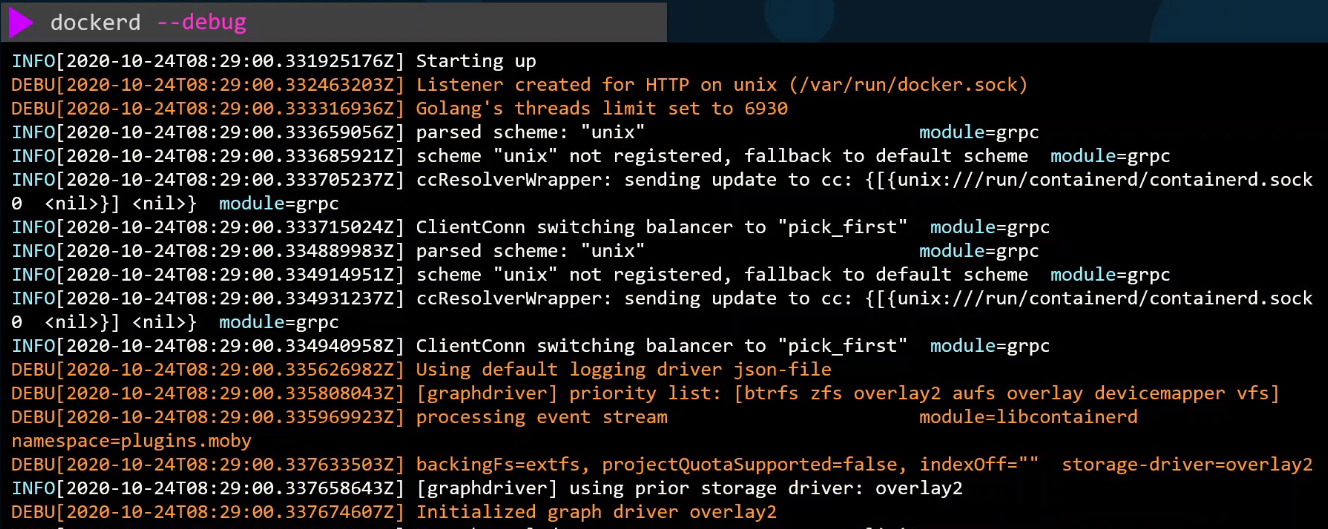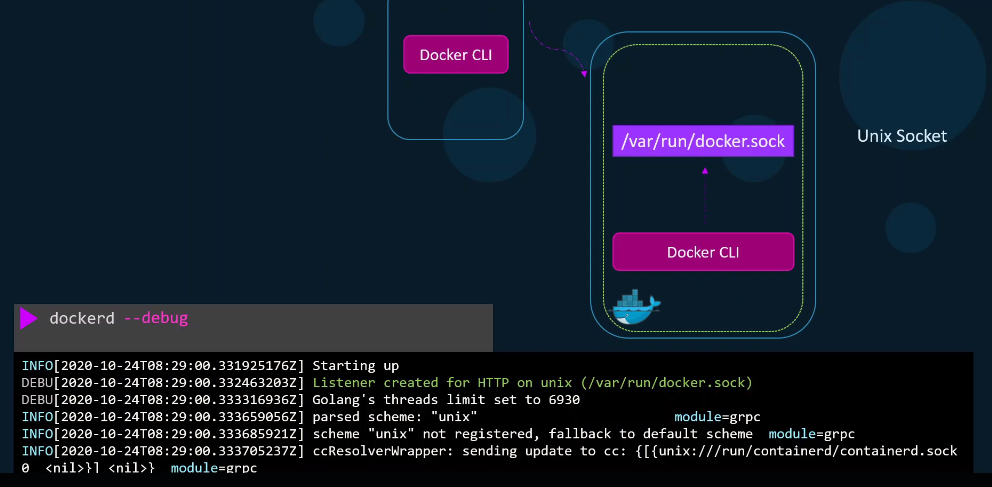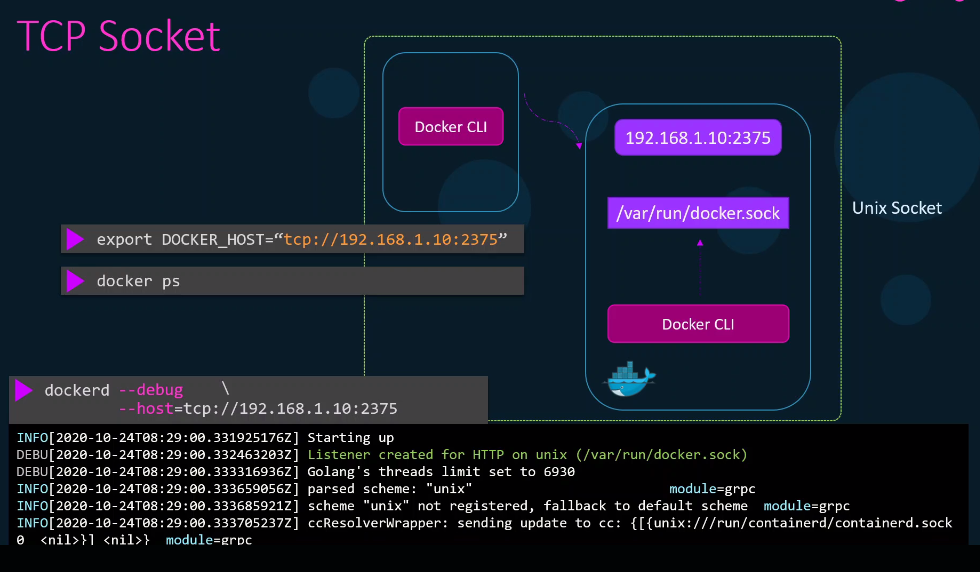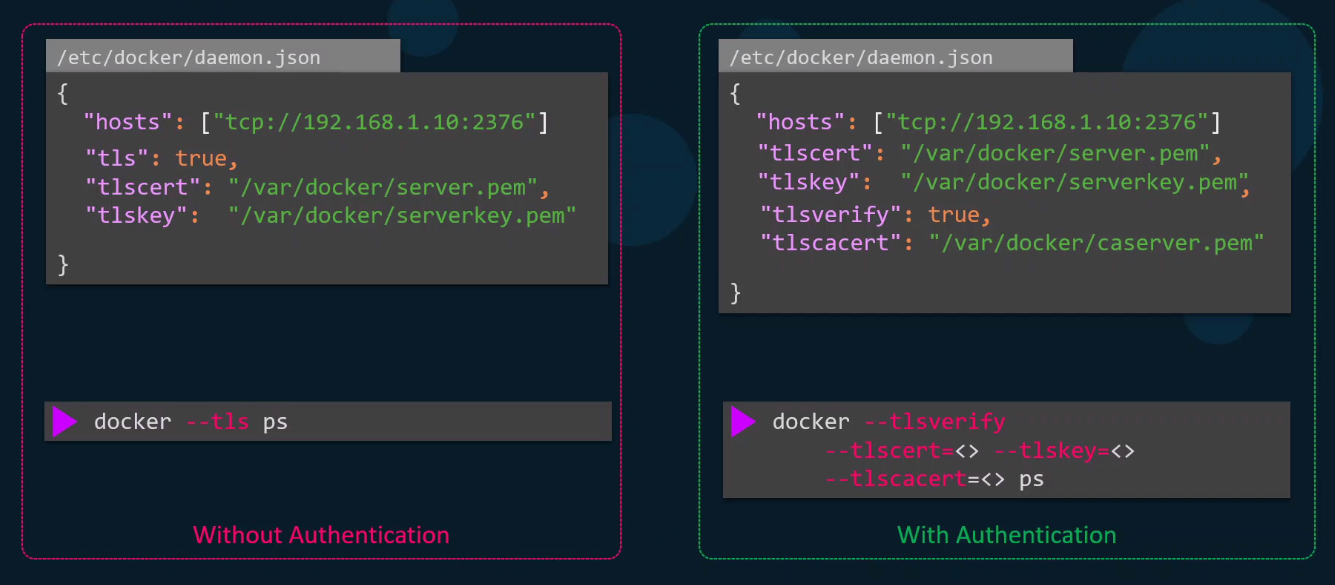All-Things-Docker-and-Kubernetes
Securing the Docker Daemon
- Docker Service Configurations
- Unix Socket
- TCP Socket
- TLS Authentication
- tls versus tlsverify
- Secure Docker Server
- Encrypt Docker Daemon Data at Rest
Docker Service Configurations
We can perform Docker operations using Systemctl:
systemctl start docker
systemctl status docker
systemctl stop docker
Docker can also be started as a foreground process using the command below. This can be used when the dockerd is not starting in the normal way and you need to troubleshoot it.
dockerd

To print more details, we can add the --debug flag.

Unix Socket
When the Docker daemon starts, it listens on an internal Unix socket at /var/run/docker.sock. This allows access to the Daemon within the same host. The Docker CLI is configured to itneract with this socket.

TCP Socket
If we have another host with Docker CLI and we need to connect to the Docker daemon, we can add a --host flag to allow the Docker daemon from the first host to be accessible from other hosts.

Before the other host can communicate to the Docker daemon in the first host, it must first set the variable for IP and port.
export DOCKER_HOST="tcp://192.168.1.10:2375
TLS Authentication
We can encrypt the connection by passing the keys and certificates:
dockerd \
--debug \
--tls=true \
--tlscacert=/path/to/ca.pem \
--tlscert=/path/to/server-cert.pem \
--tlskey=/path/to/server-key.pem \
--host=tcp://192.168.1.10:2376
Note the ports:
- 2375 - Un-enrypted traffic
- 2376 - Enrypted traffic
The configurations can also be specified in a config file:
## /etc/docker/daemon.json
{
"tlsverify": true,
"tlscacert": "/path/to/ca.pem",
"tlscert": "/path/to/server-cert.pem",
"tlskey": "/path/to/server-key.pem",
"hosts": ["tcp://0.0.0.0:2376"]
}
On the client hosts that need to access the Docker daemon in the central host, specify the variables:
export DOCKER_HOST="tcp://192.168.1.10:2376"
export DOCKER_TLS_VERIFY=true
Ensure that the keys and certificates are also in the client hosts.
tls versus tlsverify
The tls flag only enables encryption.
To enable authentication, we also need the tlsverify flag.

Secure Docker Server
To secure the Docker Daemon, we will need to secure the underlying host as well.
- Disable Password-based authentication
- Enable SSH key based authentication
- Determine users who needs access to the server
Encrypt Docker Daemon Data at Rest
Secure Docker daemon data stored on disk:
- Use Docker’s support for encrypted volumes (e.g., encrypted overlay2 storage driver).
- Encrypt the underlying file system using OS-level tools (e.g., dm-crypt on Linux).
- This approach is more about encrypting the underlying storage than Docker itself.